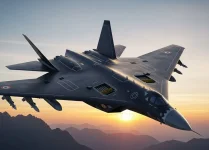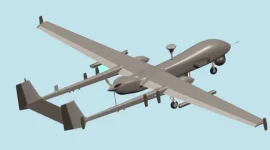Recent reports of a potential agreement valued at approximately $7 billion (around ₹61,000 crore) between India and French aerospace leader SAFRAN has sparked a significant debate within the nation's defence community.
The deal focuses on the joint development of a powerful new jet engine for India's Advanced Medium Combat Aircraft (AMCA), a fifth-generation stealth fighter program.
While the partnership is being hailed as a major step towards modernising the Indian Air Force, it has also revived concerns over SAFRAN's past record on technology transfer.
Proponents of the deal point to the long and generally successful partnership between SAFRAN and India's state-owned Hindustan Aeronautics Limited (HAL). This collaboration has been vital for India's helicopter fleet.
The Shakti engine, co-developed by the two firms, is the proven powerplant for the Advanced Light Helicopter (ALH-Dhruv), the Light Combat Helicopter (LCH), and the Light Utility Helicopter (LUH).
Having produced over 350 units in Bengaluru, the engine has demonstrated its reliability in extreme conditions, from the high altitudes of the Himalayas to maritime environments.
This established trust is a key reason SAFRAN is seen as a dependable partner for the ambitious AMCA project.
However, a cloud of scepticism hangs over the agreement, stemming from SAFRAN's past performance on technology sharing. Critics highlight that the transfer of technology (ToT) for the very same Shakti engine was reportedly delayed by nearly two decades.
This delay hampered HAL's ability to produce and maintain the engines independently, leading to continued reliance on imported components, which increased both costs and logistical challenges for India's defence forces.
This history has made many experts cautious, questioning whether the new promises of full technology sharing will be fulfilled in a timely manner.
The debate is deeply connected to India's overarching national policy of "Aatmanirbhar Bharat," or a self-reliant India. The nation's past struggles with developing its own jet engine, most notably the indigenous Kaveri engine program, have created wariness about becoming overly dependent on foreign partners for critical defence technology.
The AMCA is a flagship program for India's aerospace ambitions, and any restrictions or delays in engine technology could critically undermine the ability of the DRDO's Gas Turbine Research Establishment (GTRE) to build a self-sustaining engine manufacturing ecosystem.
Supporters of the deal argue that the current terms directly address these historical concerns. The agreement for the new 120-kilonewton (kN) thrust engine reportedly includes the complete transfer of technology and, crucially, full intellectual property rights (IPR).
Granting India IPR would be a significant milestone, allowing the country to not only manufacture the engines domestically but also to modify, upgrade, and potentially export them in the future without foreign oversight.
This is seen as a genuine opportunity for India to become a global hub for advanced jet engine production.
The sheer scale of SAFRAN's involvement in India's military aviation underscores the importance of this deal. Beyond the AMCA, the co-developed engine technology is expected to be adapted for other platforms.
There is a projected demand for nearly 400 engines for the LUH and LCH fleets, in addition to future orders for 200 ALH-Dhruv helicopters and 400 units of the new Indian Multi-Role Helicopter (IMRH).
This extensive requirement makes a robust and complete technology transfer essential for cost-effective manufacturing and long-term operational readiness.
Ultimately, the SAFRAN partnership represents a critical balancing act for India—leveraging essential foreign expertise while vigorously pursuing the goal of self-reliance.
While the French firm's commitment to full technology transfer and IPR for the AMCA program is a source of confidence, the defence community remains watchful.
The success of this multi-billion dollar venture will depend entirely on SAFRAN's ability to deliver on its promises, which could finally enable India to achieve its long-held ambition of mastering jet engine technology.


